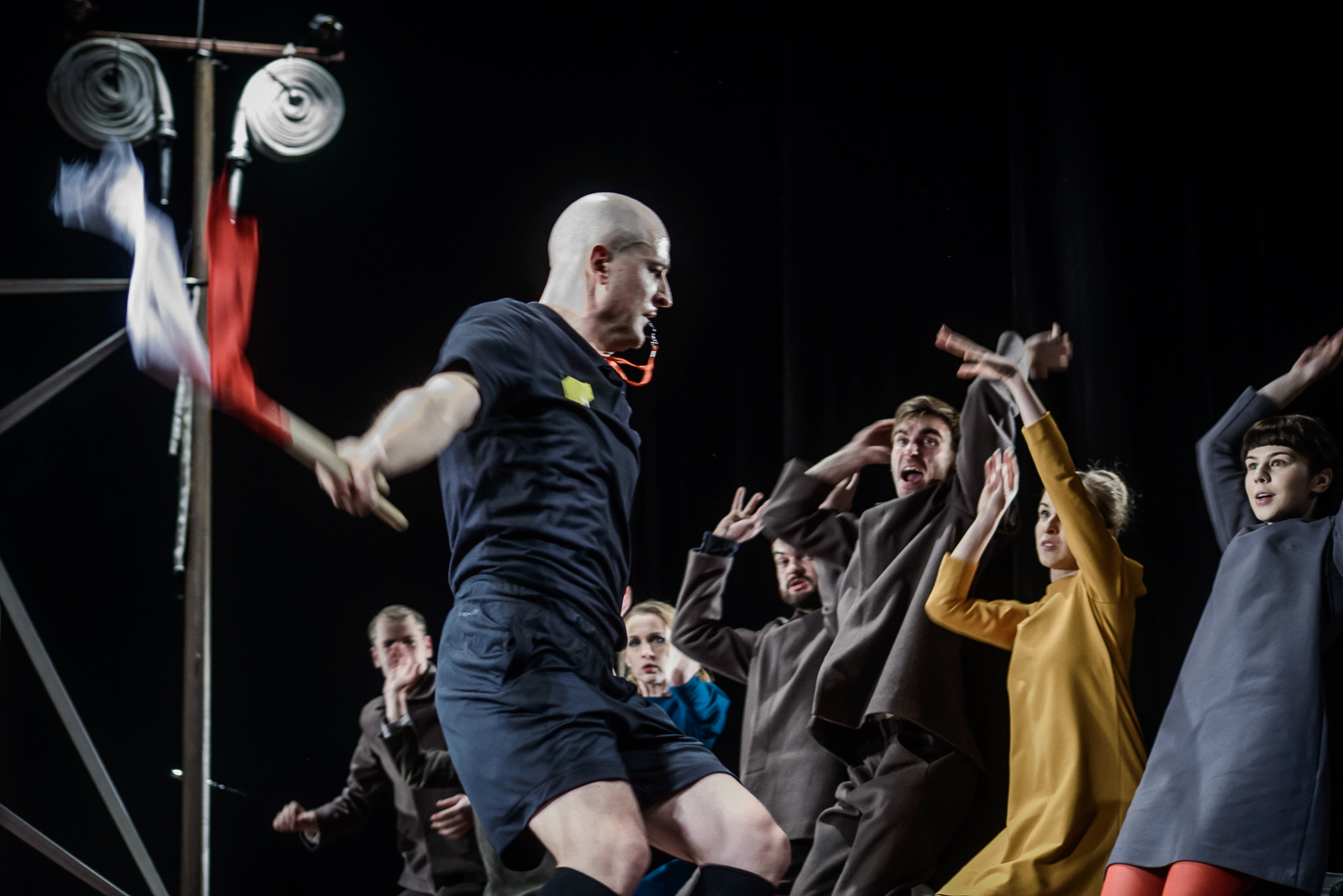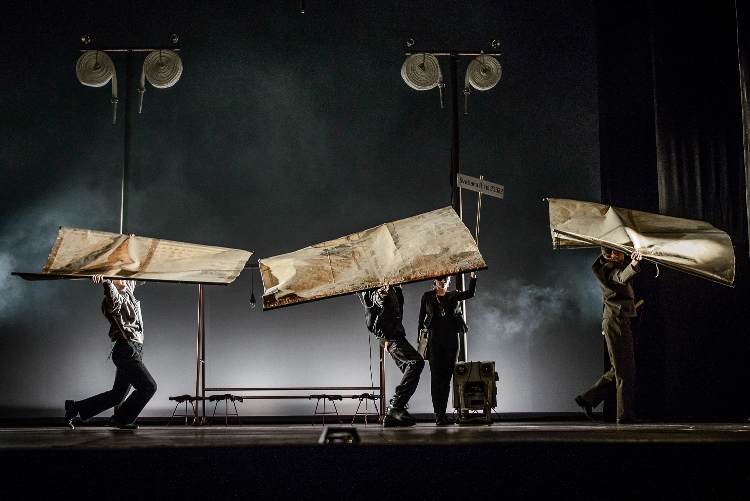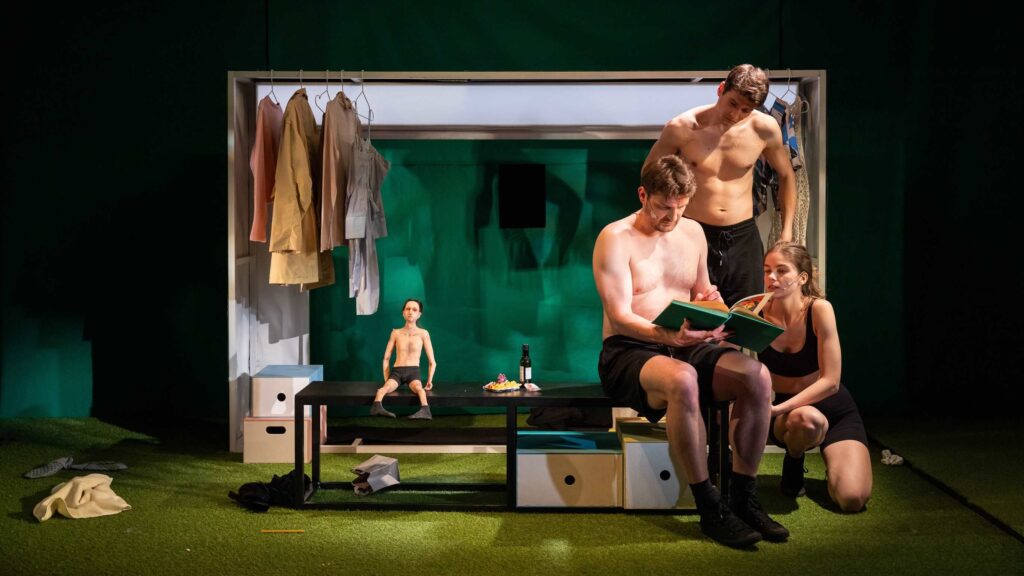After a break of 26 years, director Eimuntas Nekrošius returned to the Vilnius Youth Theatre, the theatre of his youth. The premiere of his performance Zinc (Zn) (Lith. Cinkas (Zn)) took place on November 29-30, 2017. The performance is based on the books Boys in Zinc (Russian Tsinkovye malchiki, 1993) and Chernobyl Prayer (Russian Chernobylskaya molitva, 1999) by Belarusian writer Svetlana Alexievich, the laureate of the Nobel Prize.
Nekrošius placed Svetlana Alexievich - the true and fictitious episodes of her life taken from her childhood to professional heights - at the centre of his performance. The journey is paradoxical as we witness the scenes where the would-be laureate of the Nobel Prize interviews people, writes her books and is later threatened with court proceedings by the very same people for the disclosure of their lives. The writer receives the award for the broken lives described in her books...
A three-and-a-half-hour long performance was met ambiguously. “The plane is already taking off at the airport, a mother is seeing her son off to Kabul. In the performance, zinc coffins used for the transportation of the dead by planes turn to a metal sheet being hit on the floor. The whole action reminds of a comedy, especially, when the medals “For Courage” are being distributed. During the first act, two monologues from the book Boys in Zinc by Svetlana Alexievich are performed, those of a mother and a regular soldier. However, unexpected and mysterious relations between the writer and her interlocutors are of greater interest than the content of the monologues,” Ieva Tumanovičiūtė wrote (www.menufaktura.lt).
Time is of great significance in Zinc (Zn) as with time, the famous language of metaphors of Nekrošius has been changing. The critics offered such insights, “Some time ago, a man sitting at the very edge of the fourteenth row could easily understand the performances by Eimuntas Nekrošius. /.../ the works by this director clearly reflected the time. /.../ Today, spacious performance metaphors give a lot of freedom to spectators to interpret polysemantic images; however, the distance between the stage and the audience has become much greater than before.”
Jūratė Visockaitė (Literatūra ir menas) also highlights the change of time, “During the past 30 years, the boys in zinc coffins have come from new wars. Military methods have developed; nowadays, targets can be traced with the help of computers. /.../ You watch, listen and you don't understand - have you become totally blind and deaf? Yet nothing from what's happening on the stage reverberates in your head; after the first “panoramic” scene, the second, similar one, follows. And those testimonies that were once recorded and glued to you with instant glue simply dissolve on the stage and disappear completely.”
In the opinion of theatre critic Lina Klusaitė (Kultūros barai), “In some ways, Nekrošius is offering a postmodern reworking of suffering, a light cultural mystification isolated from evaluations that seeks not to reconsider the traumas of that period but rather to “reawaken the feeling of the past.” Frederic Jameson once described this feature in a very vivid way and attributed it to nostalgia films. That nostalgic Soviet romanticism gains a real dimension in Zinc (Zn) reverberating from the authentic past of the director.”
The Association of Performing Arts Critics (APAC)
















